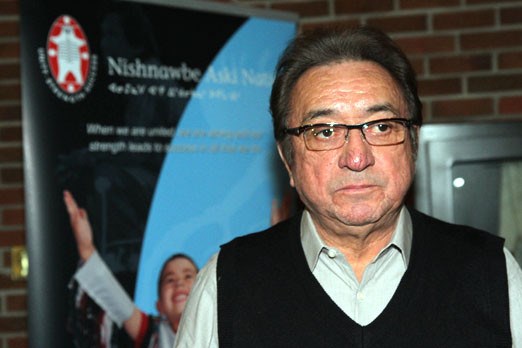Representatives from dozens of Nishnawbe Aski Nation communities met in Thunder Bay to help shed light on First Nation energy needs.
More than 200 people attended the Nishnawbe Aski Nation conference at the Valhalla Inn. The three-day conference, which started on Tuesday, focused entirely on the energy needs of First Nation communities.
NAN Deputy Grand Chief Les Louttit said many who live in the far north rely on diesel or wood burning stoves for heat and some don’t even have power to their homes.
“The top priority is shining a light on the communities,” Louttit said.
“That’s what this is really about. There are communities in the dark in this century. Can you believe that? That is our top priority. We hope the federal and provincial governments will help us to prepare a plan.”
There have been many chiefs meetings but it was the first time that representatives from of NAN communities met to discuss a single issue, he said.
Louttit said all the energy alternatives – such as wind, solar and hydro – need to be explored and studied.
He said the conference will be a success if they can network and share information on different projects.
“They are on the grid on the eastside of NAN,” he said. “By sharing and networking as well as working with the government and companies we can all put something together that will be viable for First Nation people.”
story continues after video ...
Michael Fox, a speaker at the conference, said he wanted to highlight the renewable energy potential in the Ring of Fire area.
He said they could create alternative power sources and move away from diesel.
In order to accomplish this, Fox said there are some policies they have to deal with.
Specifically he mentioned the controversial Far North Act as a possible challenge to overcome.
The Ontario Liberal government made the act law in 2010 in order to support First Nation land use planning and protect the land.
“(The Far North Act) talks about community use around waterpower versus commercial scale power projects,” Fox said.
“That’s something that I think each of the communities are going to have to grapple with in terms of commercial sized projects. I think waterpower projects can be one of those projects that you can do concurrent planning.”
He said they will need to do some site investigations before going ahead with any projects. Once those investigations are finished, they communities will have to apply those sites for approval to the Ministry of Natural Resources.
It is up to the ministry to see if the applications even are processed, he said.
Fox added they have also discussed isolated grids to help provide power to communities. While talks are ongoing, Fox said he didn’t think these ideas have been fully studied.
The conference continues Wednesday.
Follow Jeff Labine on Twitter: @Labine_reporter
